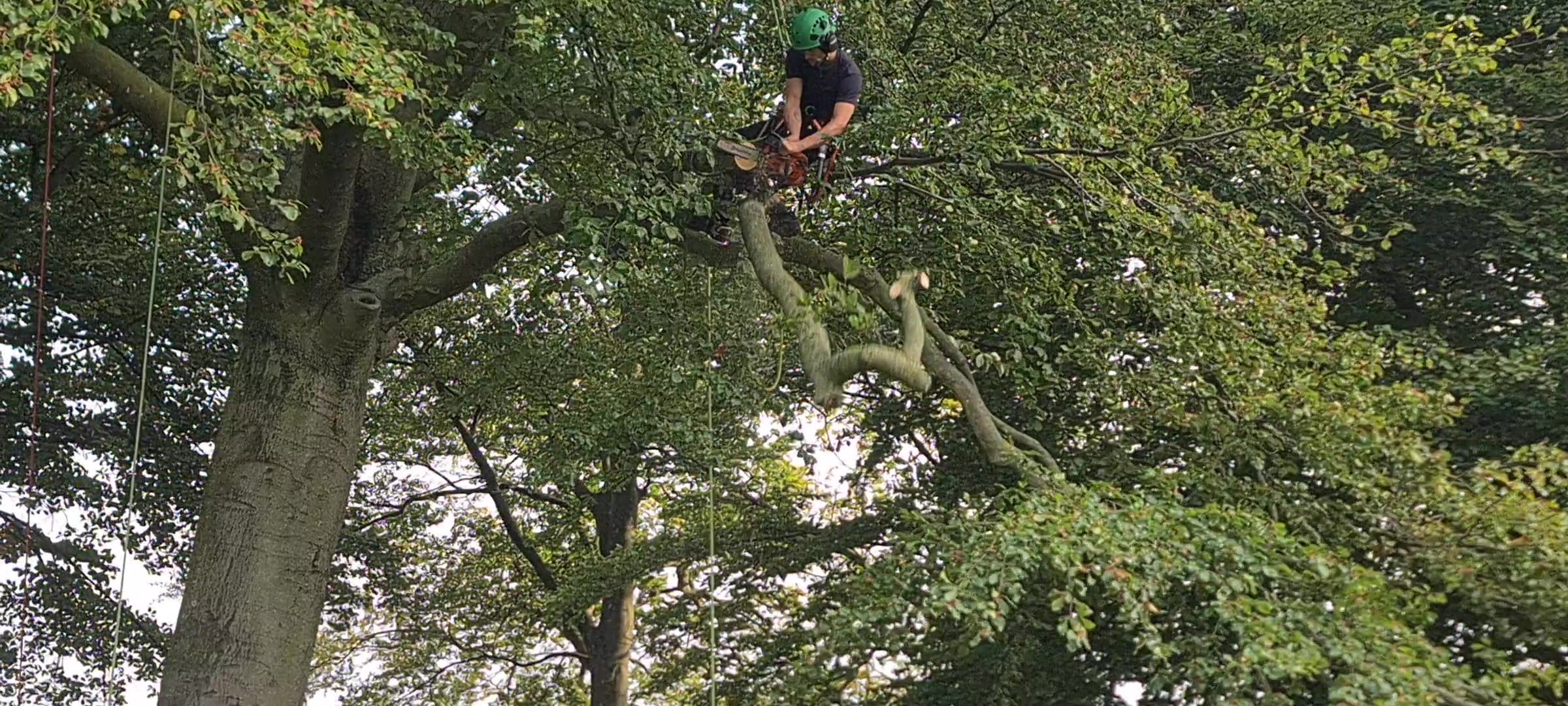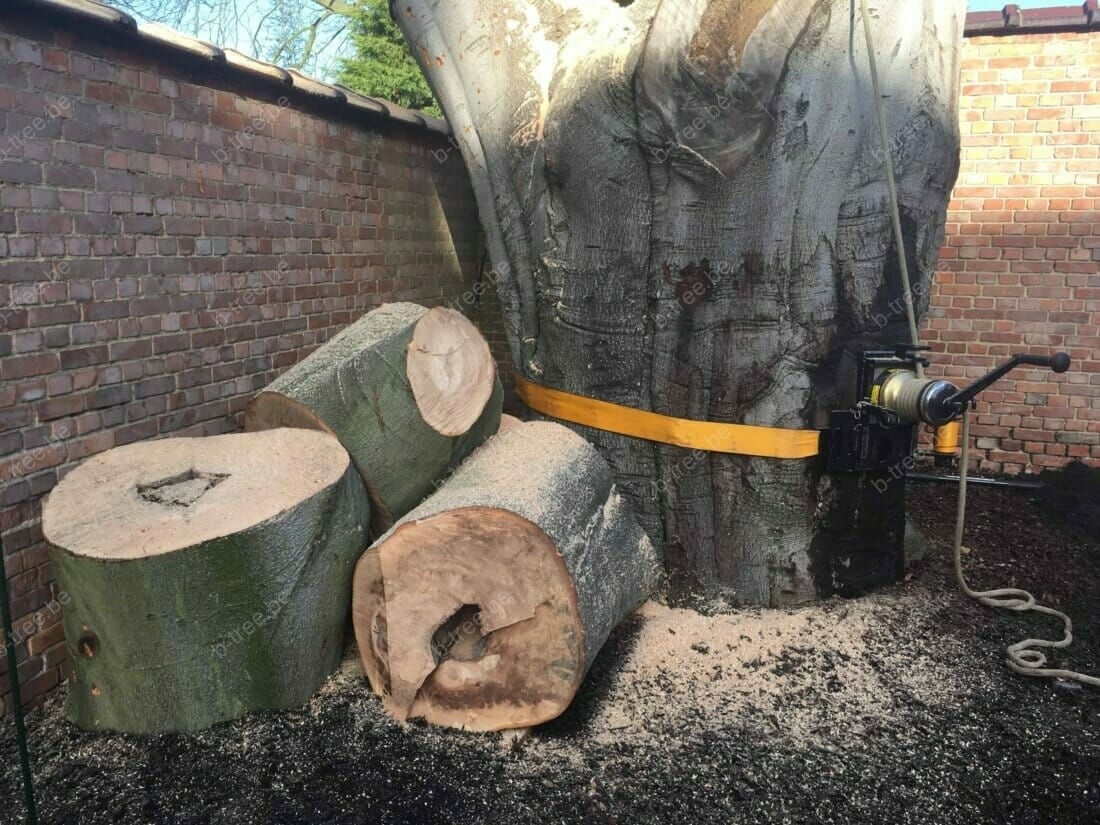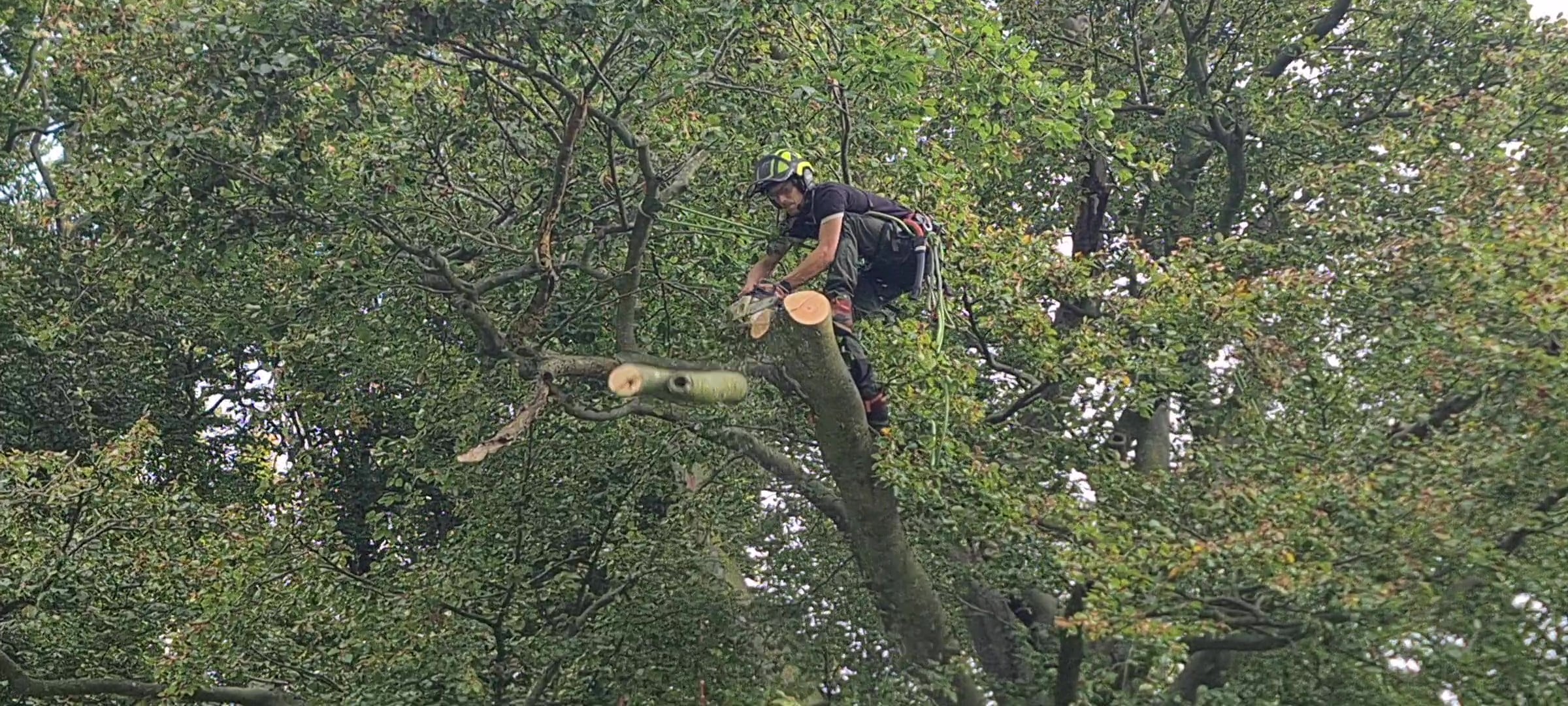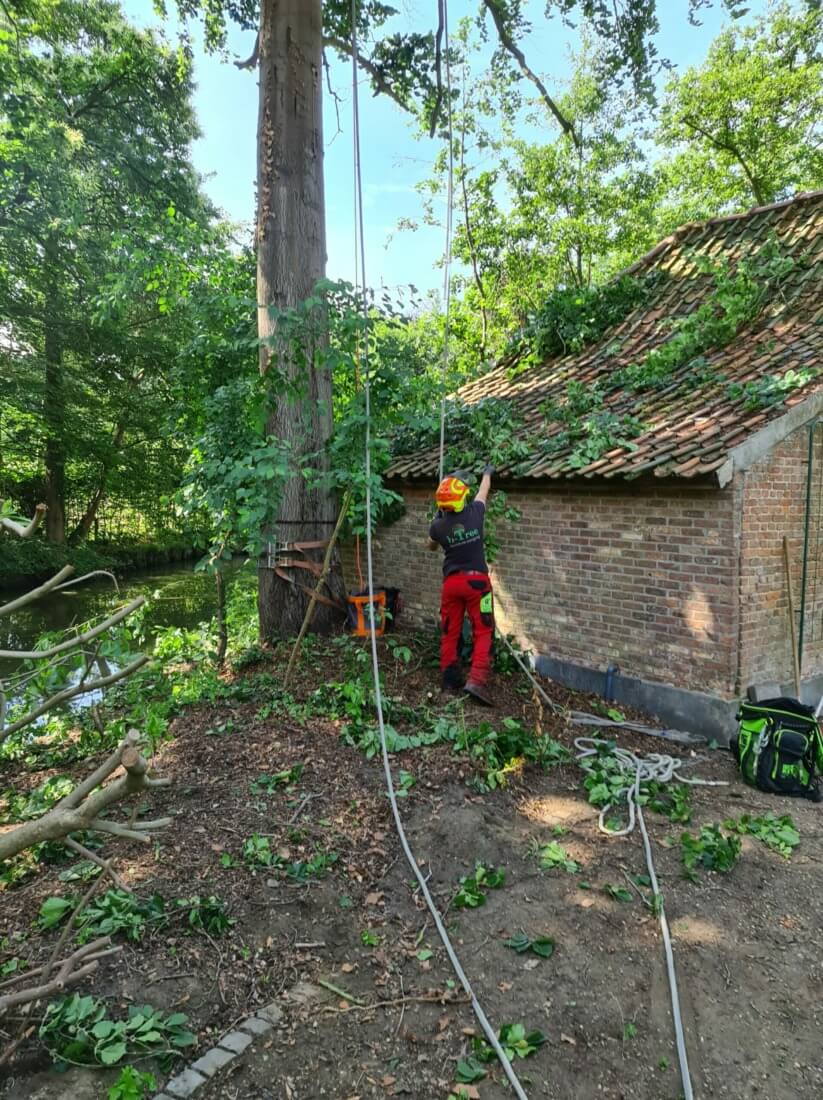

What is a lumberjack? And what is the difference with an arborist?
What does a lumberjack do?
A lumberjack is someone who specializes in cutting down and harvesting trees from, for example, a production forest. And collect wood. The tasks of a lumberjack mainly consist of:
- Cutting trees: Lumberjacks select and cut trees for various purposes, such as timber production, building materials or firewood.
- Moving tree trunks: they take care of the transportation of the felled tree trunks to the processing site.
- Processing trees: Lumberjacks cut, split, and peel tree trunks to produce various wood products, such as planks, beams, and veneers.
How did the profession of lumberjack originate?
The lumberjack profession has deep historical roots. Lumberjacks existed in ancient times, but industrialization and the growing demand for wood in the 18th and 19th centuries further professionalized the profession. In the United States in the 19th century, logging was an essential part of westward expansion and settlement building.
Lumberjacks originally used hand tools such as axes and saws, but in modern times they use advanced machines and equipment, including chainsaws and skidders, to speed up and simplify the work.
What is the difference between a lumberjack and an arborist?
A arborist on the other hand, is someone who is mainly concerned with the well-being and long-term conservation of the trees.
A arborist, also called an arborist focuses on the conservation and health of trees in urban and natural environments. Their tasks are:
- Tree care and maintenance: arborists pruning trees, remove dead branches, feed growth site improvements and other measures to preserve trees for longer and keep them healthy.
- Diagnosis and treatment of tree diseases: tree care professionals identify and treat diseases and pests that can affect trees.
- Remove trees: arborists remove trees safely when necessary, usually in urban environments where safety takes precedence and the limited space to carry out the work plays a major role.
- Planting trees: arborists plant new trees and provide aftercare such as providing water in dry periods, accompaniment pruning en growth site design.
- Tree advice: arborists give tree advice over tree management and conservation.
- Garden maintenance with respect for the trees: arborists always perform garden maintenance with respect for the trees, do not use herbicides or pesticides, do not cause mowing damage or root damage en pruning trees according to the European Tree Pruning Standard.
Arborists always wonder how you can possibly preserve the tree
Arborists will always wonder about one dangerous tree whether you can keep it by pruning or whether you really have to fell it. And only when it is really necessary, when the tree is completely in its final phase and is dangerous, it can be removed tree can also be removed without damage.

Heavy reduction pruning of a beech with heavy infestation, instead of felling the tree. So that it can be preserved for many additional years.
It is not that an arborist is only concerned with tree advice, inspection of trees or performing site improvements to preserve trees for longer.
An arborist also specializes in it removing and felling trees in the most difficult places.
This is done through efficient and ingenious rigging techniques and other rope techniques.
A lumberjack on the other hand is more concerned with it felling and harvesting, you can safely say “harvesting” trees. And this mainly for volume yield.
This often concerns easier felling, such as felling rows of trees, row by row. Or clearing forests and felling trees one tree at a time.
And it always involves heavy machines such as telehandlers, tractors, heavy carts and low loaders.
Lumberjacks use heavy machinery
However, arborists try to avoid heavy machinery
Arborists on the other hand, we don't just take care of the trees.
But also about the location and surroundingsso that they do not damage the growing area of the trees.
In this way they try to keep a dead tree tidy and damage-free sheets, without using these heavy machines.
But by using rope techniques. And make use of it applying fall notch and felling cut. So no use of heavy machinery. So that the growing place of the surrounding trees is not damaged.
This means that these surrounding trees do not have to be cut down in the long term.
However, working towards the ground without damage is often beyond the scope of a lumberjack.
Lumberjacks, on the other hand, are increasingly using heavier and heavier machines.
This increases the efficiency of the work when dealing with larger batches of trees.
However, the heavy machines cause soil compaction, which in turn... tree species' own ecosystem destroys.
Which in turn is very bad for the remaining and surrounding trees. Both in the short and long term.
Soil recovery takes up to 100 years. Yes, you read that right. 100 years and more.
Just look at the criteria for one felling authorization from ANB. Which permit you often have to request to chop down a tree. There you will explicitly find “What measures do you propose to prevent damage to nature and the soil caused by the cutting, to prevent?". This question is not asked lightly. It is indeed to save and protect nature and the soil.
b‑Tree Tree Care likes as skillfully arborist take this into account anyway. Namely that no additional damage is caused. The use of light and small tools, in combination with sophisticated rigging techniques and rope techniques makes the difference here.
Lumberjacks make much less use of these light, but tree-friendly and soil-friendly techniques. Therefore choose b-Tree Tree Care.
A tree care professional is cheaper and certainly in the long term
Don't think it will cost more to go with one arborist to work together. On the contrary.
It is cheaper in the long run.
You will be left with a healthy and vital tree stock and the right one tree advice to get.
This spares you from additional felling in the long term due to soil damage caused by heavy machines. Or because of lack of knowledge.
Choose the professional arborist b‑Tree and its enthusiastic and passionate team.
En contact us without obligation.
Or call us suddenly 0495 53 60 80.
All year round.
Thanks in advance!!
